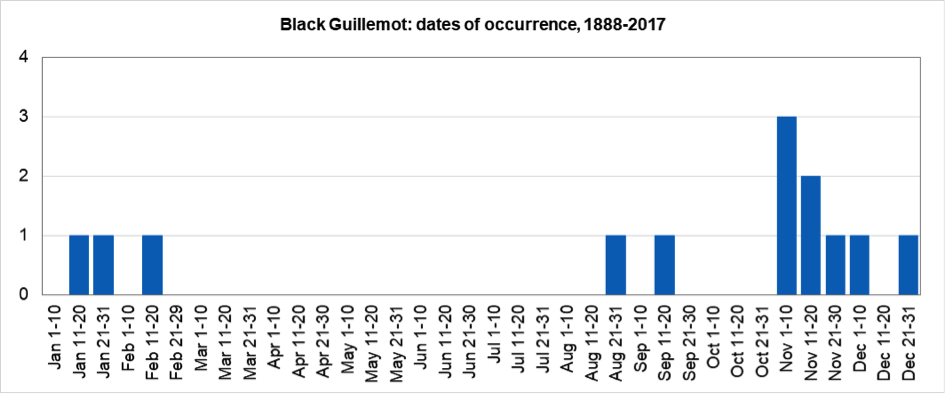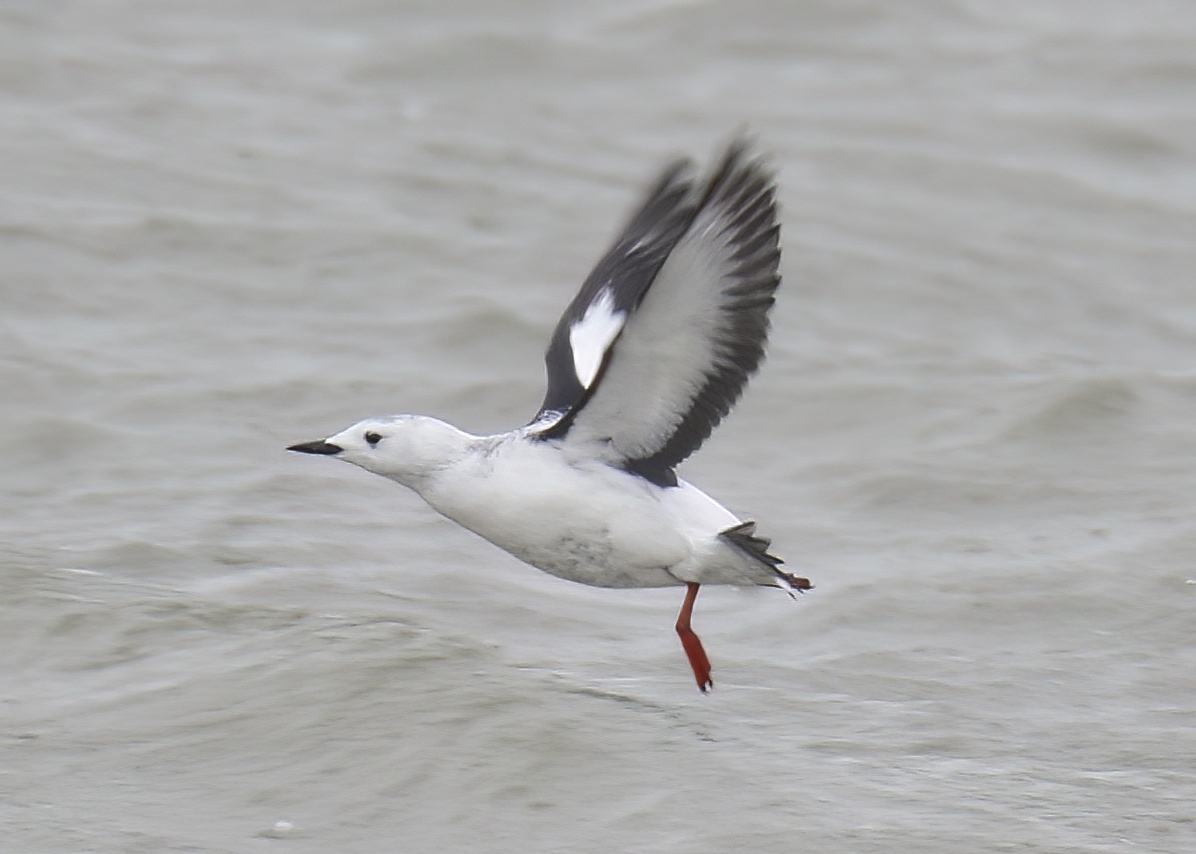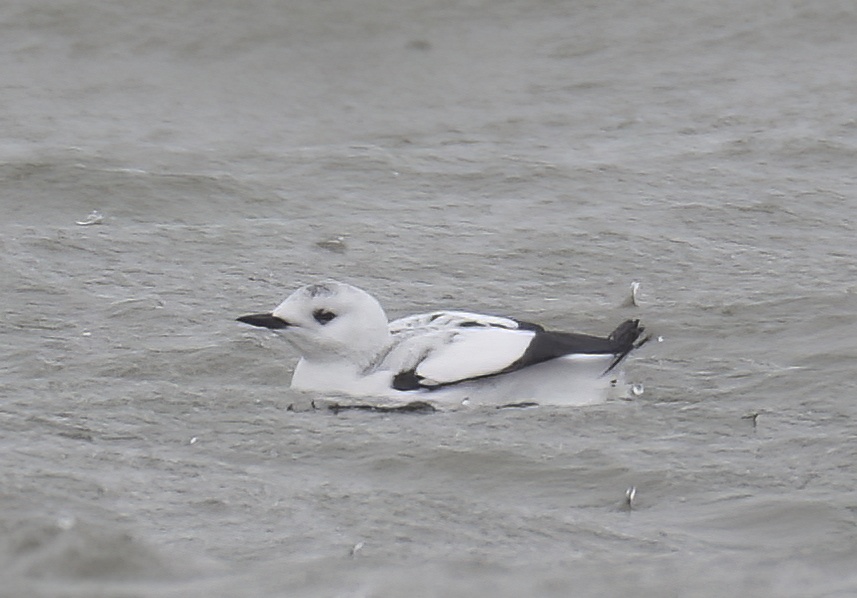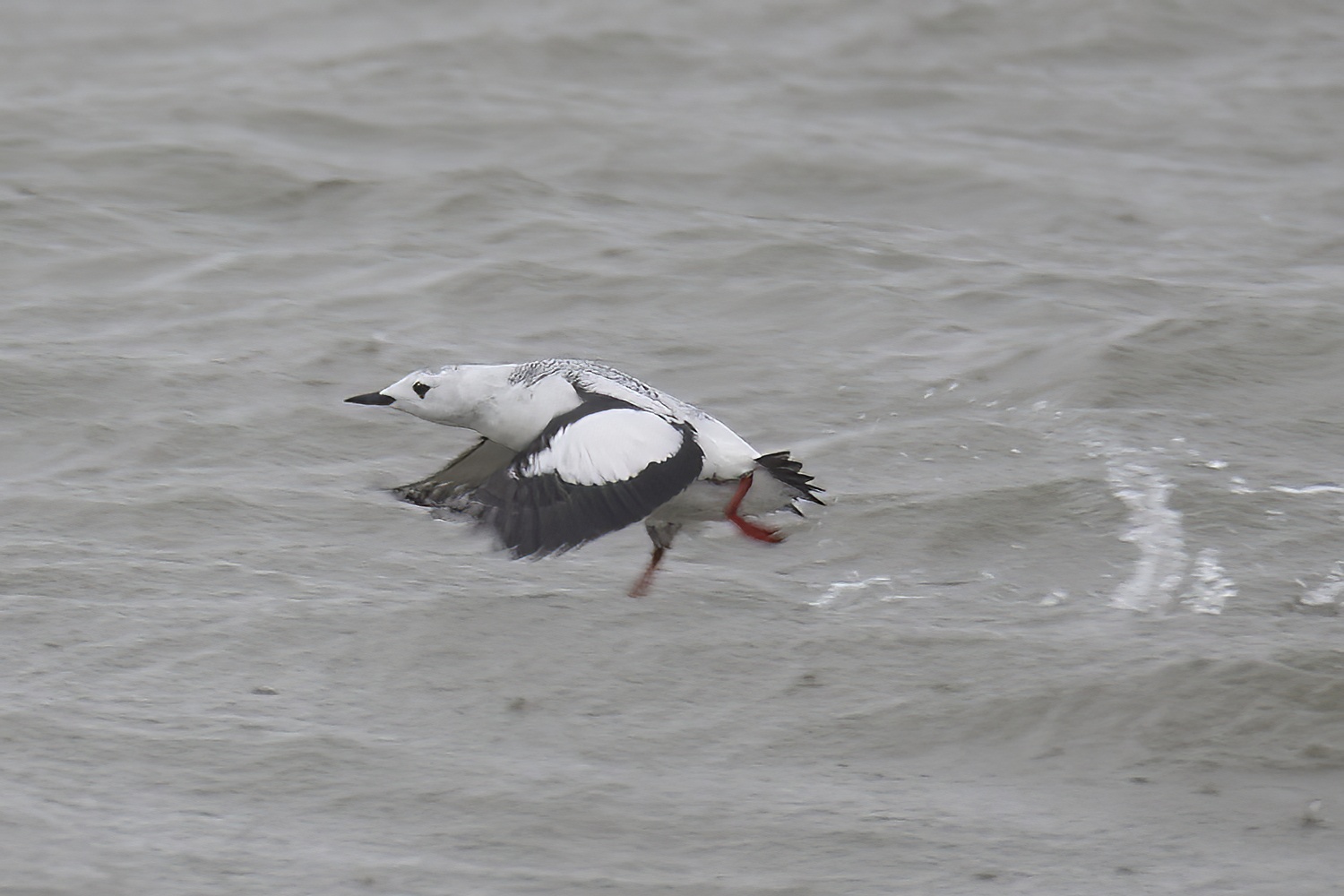Black Guillemot Cepphus grylle
A Black Guillemot held in Lincoln Museum was said to have been shot at Washingborough, near Lincoln, on January 21st 1899. After that first record, none was recorded until the 1960s and occurrence has been sparse and erratic since then. The total of 13 records, all of single birds, makes this rarer in the county than, for example, Lesser Yellowlegs and Little Bunting.
The scarcity of Black Guillemot here contrasts with its relative frequency in Yorkshire and Norfolk, in both of which it is more or less annual, and often with several seen per year (e.g. Mather 1986, Taylor et al. 1999). This is a good illustration of the limited sea-watching opportunities in Lincolnshire, since evidently small numbers must be passing by offshore. All of the recent records, since the 1960s, have been on the coast. The first record is more surprising, as inland occurrences of Black Guillemots in Britain are extremely rare (with none in Norfolk and one in 1948 in Yorkshire known to Taylor et al. 1999 and Mather 1986), but not impossible. It has only occurred in winter (see chart), the earliest being at Donna Nook on August 30th 1967 and the latest at Huttoft on February 13th 1983. Six of the thirteen records have fallen in November.

Mandt's Black Guillemot, Cepphus grylle mandtii.
A bird found in The Wash at Witham Mouth in December 2017 had a strikingly white appearance suggesting that it belonged to the high-Arctic breeding form ‘Mandt’s Black Guillemot’ C. g. mandtii, previously unrecorded from Britain. The record was duly accepted by BBRC and BOURC in 2021 as being the first British record of this taxon and added to Category A of the British List. These images are the only ones that we know of of Black Guillemot, we have none of the 'expected' race occurring in the waters of northern and western UK.



Mandt's Black Guillemot, Witham Mouth, December 10th 2017 (Steve Gantlett).
| Site | First date | Last date | Count | Notes |
| Washingborough | 21/01/1899 | - | 1 | Shot |
| Chapel Point | 21/09/1963 | - | 1 | |
| Gibraltar Point NNR | 13/11/1965 | - | 1 | |
| Gibraltar Point NNR | 15/01/1966 | - | 1 | |
| Donna Nook | 30/08/1967 | - | 1 | |
| Gibraltar Point NNR | 16/11/1968 | - | 1 | Found dead |
| Witham Mouth | 29/12/1977 | 03/01/1978 | 1 | |
| Donna Nook | 05/11/1980 | - | 1 | |
| North Cotes | 23/11/1980 | - | 1 | Considered different from the on of 05/11/1980 |
| Huttoft | 13/02/1983 | - | 1 | Winter of the 'auk wreck', 2510 dead Razorbills found. |
| Huttoft | 02/11/1985 | - | 1 | |
| Huttoft | 05/11/2006 | - | 1 | 1CY, seen during a major Little Auk passage. |
| Witham Mouth | 07/12/2017 | 10/12/2017 | 1 | 2CY+, C.g. mandtii, first for Great Britain. |
| Chapel St. Leonard's | 30/10/2019 | - | 1 |
‘Mandt’s’ Black Guillemot, Cepphus grylle mandtii, at Witham Mouth, December 7th, 2017: new to Britain and Lincolnshire
by Dave Roberts.
Note: this article appeared in Lincolnshire Bird Report 2019. The record was accepted by the BOU as the first record of this taxon to occur in Britain (https://bou.org.uk/british-list/changes-6-mar-2020/).
Circumstances and description
On Friday 7th December 2017, I travelled over to the Cut End section of The Wash, southeast of Boston, for one of my regular seawatching sessions there. There was a strong south-westerly wind blowing – not the most favourable direction, but there are usually one or two interesting birds taking shelter in the calm waters of the mouth of the Rivers Witham and Welland in such conditions.
In the event, I enjoyed a decent morning’s birding, with four Long-tailed Duck south, a Slavonian Grebe, a Great Northern Diver, Shag, Hen Harrier and Merlin. It wasn't until lunchtime that I decided to open the south-facing window of the hide, as the rain and hail had been lashing it for most of the morning. I scanned the rocks for waders, then the Welland (at least the bits of it that I could see).
It was then that I noticed a strikingly white bird, very distant and close to the riverbank. It was immediately obvious to me that I had a Black Guillemot in my sights, even though it was for only a couple of seconds. In that same moment I was struck with just how white it looked. My previous experience of the species had mostly been of summer-plumaged birds along the coasts of western Scotland and Northern Ireland. I had seen a winter-plumaged individual a few years earlier in Norfolk, but my bird looked very different indeed from that one.
The bird disappeared, out of my view, and I was initially worried that I might not see it again. I did, however, still very distantly and only for a few seconds each time, before it dived or went out of view again. I had to get a photo! Well, I did, but they came out only as white 'blobs'. More brief views were had over the next hour or two, including in-flight views. I put news out and local birder Paul Sullivan made it down to the hide to see the bird that same day.
This Black Guillemot initially proved very popular with Lincolnshire birders since many people needed it for their county list alone, including me: the previous one in the county was some 11 years earlier. A few birders managed to get much better photographs over the weekend, and as a result of its very pale appearance there was some suggestion on social media (by Graham Catley at least) that this bird could possibly be of the high-Arctic subspecies C. g. mandtii. The online discussions and the possibility that it was the first British record of mandtii attracted attention from beyond the boundaries of Lincolnshire, and on the Sunday morning it was seen and photographed by Norfolk-based Steve Gantlett; his photographs, and subsequent submission of the record to BBRC, were instrumental in its eventual acceptance as the first British record of ‘Mandt’s Black Guillemot’.
Additional note: Mandt's Black Guillemot breeds from north-east Canada to Svalbard to northern Siberia and northern Alaska. Individuals resembling this taxon have also been observed in Iceland, the Faroe Islands and the Netherlands. IOC currently recognises five subspecies. The form breeding in the British Isles arcticus, is largely sedentary, and also breeds in north-east USA, south-east Canada, Greenland, Scandinavia and the White Sea. The nominate form grylle is confined to the Baltic, while the Faroe Islands and Iceland have their own subspecies faroeensis and islandicae.
In non-breeding plumage mandtii is generally very much paler than arcticus, in having a largely white head, lacking both a dark loral spot and dark ear-coverts, and having an all-white rump, scapulars and wing coverts. The Cut End bird showed all of these features.
References
Mather, J.R. (1986). The Birds of Yorkshire. Croom Helm, Beckenham.
McInerny, C. J., & McGowan, R. Y. (2021). ‘Mandt’s Black Guillemot’ in Lincolnshire: the BOURC assessment of the first British record. Brit. Birds 114: 167–171.
Taylor, M., Seago, M., Allard, P. and Dorling, D. (1999). The Birds of Norfolk. Pica Press, Sussex.
(Account prepared October 2017, updated with reference to the new Birds of Lincolnshire (2021), included September 2022)

